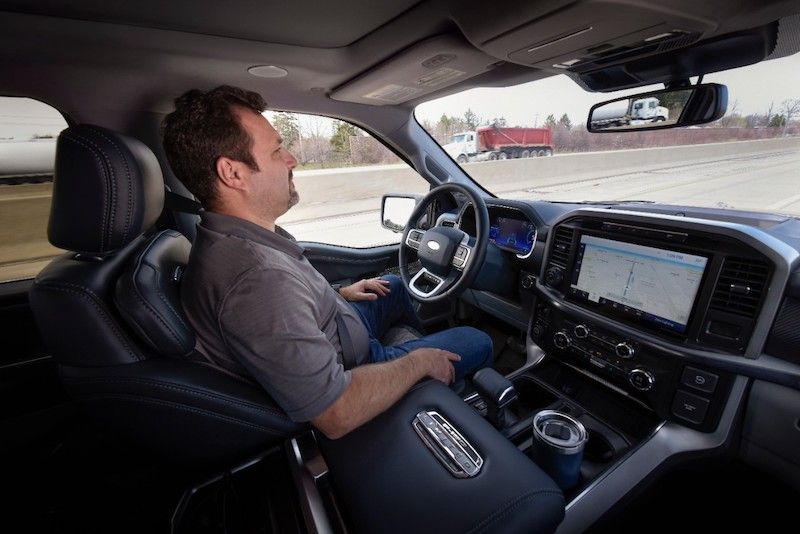IIHS Creates New Guidelines to Test Semi-Autonomous Driver-Assist Systems
【Summary】Not a single Level 2 semi-autonomous system available on the market today meets the institute’s new guidelines, but the IIHS hopes that automakers will use it to improve systems going forward.

Advanced driver-assist systems are becoming more common on modern vehicles. Not too long ago, Tesla was the only automaker offering a highly advanced driver-assist system capable of lending a helping hand to drivers. Now, you can find an advanced system on cars like the Toyota Camry. Some automakers, like General Motors and Ford, even have hands-free driver-assist systems.
To help drivers get a better idea of how the systems operate in the real world, the Insurance Institute for Highway Safety (IIHS) is getting ready to add an additional section to its crash and safety tests. This one, will cover advanced driver-assist systems.
IIHS To Test Semi-Autonomous Systems
Under the new guidelines, the IIHS will test Level 2 semi-autonomous systems and rate them similarly to the other tests it completes. So, systems will be given a score of Good, Acceptable, Marginal, or Poor.
In order to earn a rating of Good, which is the highest one available, the system will need to be able to tell whether the driver's eyes are looking at the road ahead and that their hands are prepared to take control of the car at all times. The IIHS will also be looking for "escalating alerts and appropriate emergency procedures" for when these conditions are not met. Additionally, automatic lane changes must be initiated or confirmed by the driver, adaptive cruise control must be re-engaged after the driver is looking away for an extended period of time or after a lengthy stop, lane steering systems must be able to be overridden by drivers, and other safety features must be activated in order for a semi-autonomous feature to function.
The IIHS claims that none of the available semi-autonomous systems on the market meet its requirements to earn a Good rating, which highlights the need for testing on partially automated systems. Additionally, with more advanced systems expanding to more affordable vehicles, consumers should be able to get more information on how well their systems work.
"Partial automation systems may make long drives seem like less of a burden, but there is no evidence that they make driving safer," says IIHS President David Harkey. "In fact, the opposite may be the case if systems lack adequate safeguards."
Why Have New Tests?
The new tests are also being introduced as a way to educate consumers. Automakers are attaching misleading names and messages to their systems, leading consumers to believe that their cars have self-driving capabilities. That's far from the case, as self-driving vehicles are not on sale today. Names like Autopilot, BlueCruise, Super Cruise, and Pilot Assist don't describe how these systems work or their capabilities.
"The way many of these systems operate gives people the impression that they're capable of doing more than they really are," Mueller says. "But even when drivers understand the limitations of partial automation, their minds can still wander. As humans, it's harder for us to remain vigilant when we're watching and waiting for a problem to occur than it is when we're doing all the driving ourselves."
The IIHS aims to have its first ratings for its driver-assist systems issued this year, though supply chain issues may delay some scores. The institute didn't say whether vehicles will need to have a Good rating to earn one of its awards.
-


2023 Jeep Grand Cherokee Trailhawk Now PHEV Only
-


Acura Prevision EV Concept Previews Brand’s Electric Future
-


Hyundai Gets Serious About Electric Performance Cars, Shows off Two Concepts
-


Ford Looks to Have 100% of EV Sales Be Online
-


Volkswagen CEO Believes It Will Overtake Tesla in EV Sales by 2025
-


Report Claims Nissan Leaf Will Be Discontinued by 2025
-


Autonomous Vehicles Will Require Cities to Change Their Transportation Methods
-


Rivian, Mercedes-Benz Partner to Produce Electric Commercial Vans
- High Gas Prices Aren’t Enough to Sway Consumers to EVs, Autolist Survey Finds
- GM to Invest $81 Million to Hand-Build Cadillac Celestiq in Michigan
- Vietnam-based Electric Vehicle Startup VinFast Ships its First Vehicles to the U.S.
- Toyota’s New ‘Intelligent Assistant’ Learns Voice Commands and Gets Smarter Over Time Using Machine Learning
- Tesla’s Battery Supplier Panasonic is Working on New EV Battery Technology That Can Boost Range by 20%
- Tesla Believes Its Dojo AI System Will Help It Win the Self-Driving Car Race
- FCA to Pay $300 Million Fine for Emissions-Cheating Vehicles
- Mercedes-Benz Signs MoU With the Government of Canada to Source the Raw Materials for Electric Vehicle Batteries
- China’s Baidu Reveals the Apollo RT6, a Fully Autonomous, Production Ready Level-4 Robotaxi with Removable Steering Wheel
- Tesla Challenger NIO Inc Reports its Highest-Ever Monthly Sales in June











 About Us
About Us Contact Us
Contact Us Careers
Careers